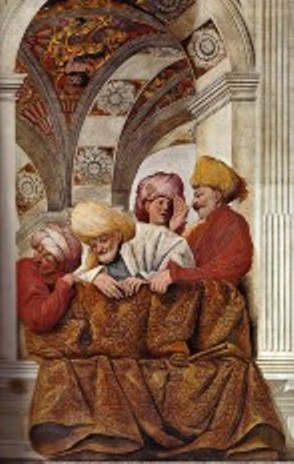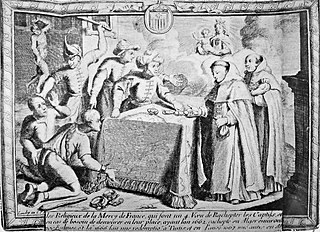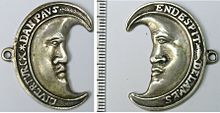
The Thirty Years' War was one of the longest and most destructive conflicts in European history, lasting from 1618 to 1648. Fought primarily in Central Europe, an estimated 4.5 to 8 million soldiers and civilians died as a result of battle, famine, and disease, while some areas of what is now modern Germany experienced population declines of over 50%. Related conflicts include the Eighty Years' War, the War of the Mantuan Succession, the Franco-Spanish War, the Dutch-Portuguese War and the Portuguese Restoration War.

The 16th century begins with the Julian year 1501 (MDI) and ends with either the Julian or the Gregorian year 1600 (MDC). The Habsburg Spanish Empire, Portuguese Empire, Ottoman Empire, Safavid Persia, Mughal India and Ming China were the most powerful and hegemonic states.

Ferdinand I was Holy Roman Emperor from 1556, King of Bohemia, Hungary, and Croatia from 1526, and Archduke of Austria from 1521 until his death in 1564. Before his accession as Emperor, he ruled the Austrian hereditary lands of the Habsburgs in the name of his elder brother, Charles V, Holy Roman Emperor. Also, he often served as Charles' representative in the Holy Roman Empire and developed encouraging relationships with German princes. In addition, Ferdinand also developed valuable relationships with the German banking house of Jakob Fugger and the Catalan bank, Banca Palenzuela Levi Kahana.

The Schmalkaldic League was a military alliance of Lutheran princes within the Holy Roman Empire during the mid-16th century.

The Grand Alliance was the anti-French coalition formed on 20 December 1689 between the Dutch Republic, England and the Holy Roman Empire. It was signed by the two leading opponents of France: William III, Stadtholder of the Dutch Republic and King of England, and Emperor Leopold I, on behalf of the Archduchy of Austria.

The Military Frontier was a borderland of the Habsburg monarchy and later the Austrian and Austro-Hungarian Empire. It acted as the cordon sanitaire against incursions from the Ottoman Empire.

The Eighty Years' War or Dutch Revolt (c.1566/1568–1648) was an armed conflict in the Habsburg Netherlands between disparate groups of rebels and the Spanish government. The causes of the war included the Reformation, centralisation, taxation, and the rights and privileges of the nobility and cities.

Habsburg Spain is a contemporary historiographical term referring to the huge extent of territories ruled between the 16th and 18th centuries (1516–1713) by kings from the Spanish branch of the House of Habsburg. Habsburg Spain was a composite monarchy and a personal union. The Habsburg Hispanic Monarchs reached the zenith of their influence and power ruling the Spanish Empire. They controlled territories over the five continents, including the Americas, the East Indies, the Low Countries, Belgium, Luxembourg, and territories now in Italy, France and Germany in Europe, the Portuguese Empire from 1580 to 1640, and various other territories such as small enclaves like Ceuta and Oran in North Africa. This period of Spanish history has also been referred to as the "Age of Expansion".

The term French–Habsburg rivalry describes the rivalry between France and the House of Habsburg. The Habsburgs headed an expansive and evolving Empire that included, at various times, the Holy Roman Empire, the Spanish Empire, Austria, Bohemia and Hungary from the Diet of Augsburg in the High Middle Ages until the dissolution of the monarchy following World War I in the late modern period.

The Holy Leagueof 1684 was a coalition of European nations formed during the Great Turkish War. Born out of the Treaty of Warsaw, it was founded as a means to prevent further Ottoman expansion into Europe. This consolidation of a large portion of Europe's military might led to unprecedented military successes, with large areas of previously ceded land recovered in Morea, Dalmatia and Danubia in what has been dubbed a "14th crusade".

The Habsburg Empire of Charles V and its allies conquered Tunis in 1535, wresting the city away from the control of the Ottoman Empire.
The European balance of power is the tenet in international relations that no single power should be allowed to achieve hegemony over a substantial part of Europe. During much of the Modern Age, the balance was achieved by having a small number of ever-changing alliances contending for power, which culminated in the World Wars of the early 20th century. By 1945, European-led global dominance and rivalry had ended and the doctrine of European balance of power was replaced by a worldwide balance of power involving the United States and the Soviet Union as the modern superpowers.

The Franco-Ottoman Alliance, also known as the Franco-Turkish Alliance, was an alliance established in 1536 between the King of France Francis I and the Sultan of the Ottoman Empire Suleiman I. The strategic and sometimes tactical alliance was one of the longest-lasting and most important foreign alliances of France, and was particularly influential during the Italian Wars. The Franco-Ottoman military alliance reached its peak around 1553 during the reign Henry II of France.

Liever Turks dan Paaps, also Liever Turksch dan Paus, was a Dutch Christian slogan during the Dutch Revolt of the end of the 16th century. The slogan was used by the Dutch mercenary naval forces in their fight against Catholic Spain.
Protestantism and Islam entered into contact during the early-16th century when the Ottoman Empire, expanding in the Balkans, first encountered Calvinist Protestants in present-day Hungary and Transylvania. As both parties opposed the Austrian Holy Roman Emperor and his Roman Catholic allies, numerous exchanges occurred, exploring religious similarities and the possibility of trade and military alliances.

The Persian embassy to Europe (1599–1602) was dispatched by the Persian Shah Abbas I in 1599 to obtain an alliance against the Ottoman Empire. The Persians had then been at war with the Ottoman Empire for more than a century, and so decided to try to obtain European help against the Ottomans. Besides the territorial antagonism of the Ottoman and Persian realms, there was also strong religious antagonism, as the Persians proclaimed Shiism against the Ottoman Empire's Sunnism. The objective of the mission was to establish a European–Persian alliance against the Ottoman Turks. These Persian efforts at rapprochement with Europe followed the Persian defeat against the Ottoman Empire in the Ottoman–Safavid War (1578–1590).

The Persian embassy to Europe (1609–1615) was dispatched by the Persian Shah Abbas I in 1609 to obtain an alliance with Europe against the Ottoman Empire. The embassy was led by the Englishman Robert Shirley.

There was an Abbasid–Carolingian alliance during the 8th and 9th centuries, effected through a series of embassies, rapprochements and combined military operations between the Frankish Carolingian Empire and the Abbasid Caliphate.

France–Asia relations span a period of more than two millennia, starting in the 6th century BCE with the establishment of Marseille by Greeks from Asia Minor, and continuing in the 3rd century BCE with Gaulish invasions of Asia Minor to form the kingdom of Galatia, and Frankish Crusaders forming the Crusader states. Since these early interactions, France has had a rich history of contacts with the Asian continent.

Anglo-Turkish piracy or the Anglo-Barbary piracy was the collaboration between Barbary pirates and English pirates against Catholic shipping during the 17th century.


















